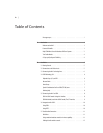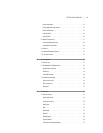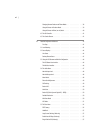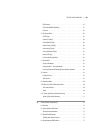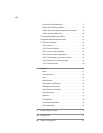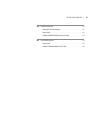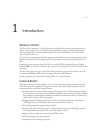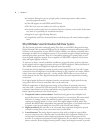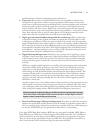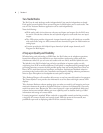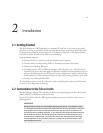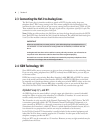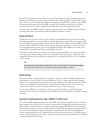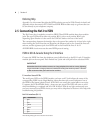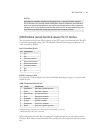2 | Section 1
Conference linking lets you set up high-quality conferencing between callers with no ♦
external equipment needed.
Caller ID support on both ISDN and POTS lines.
♦
e Nx12 can serve two studios, each with two hybrids. ♦
In the two-studio modes, lines can either be shared or exclusive to each studio. In the latter ♦
case, there is no possibility for accidental interaction.
Support for up to eight Desktop Directors.
♦
Compatibility with Telos Assistant Producer and third-party call control software applica- ♦
tions.
Why ISDN Makes Sense for Broadcast Talk Show Systems
e Nx12 works with either traditional analog Telco lines or with ISDN (Integrated Services
Digital Network). We recommend ISDN service for telephone connections whenever possible.
Contrary to the perceptions of some, ISDN is widely available, cost-effective, and offers many
advantages for studio on-air telephone systems. It is yet another example of digital technology
enhancing broadcast operations. ere is no comparable technology for getting audio to and
from the public telephone network. Even compared to VoIP, ISDN is superior, with its lower
delay and higher Quality of Service.
To assist you to have a smooth, troublefree installation, we provide plenty of advice right here
in this manual, and live support by people with years of ISDN experience. (Many thousands of
Telos ISDN interfaces and Zephyrs are deployed around the world!)
Currently, the dial-up telephone network is nearly entirely digital. Only the “last mile” copper
connections from the telephone Central Office exchange to the customer’s site remain with the
archaic (more than a hundred years old…) analog scheme. ISDN offers us a way to link our
studios directly into the Telco digital infrastructure without the usual impairments of analog
connections.
In all-digital studio facilities, the telephone interface can maintain a digital path all the way
using either AES or Livewire networked audio on the studio side
While the application of digital signal processing to the problem of separating announcer
and caller audio – pioneered by Telos and used in all of our telephone interfaces – has made
a dramatic improvement over analog-only hybrids, using digital phone lines for on-air calls
further improves performance for several reasons:
Exceptional send-to-receive isolation. 1. Traditional analog phone lines multiplex both
speech directions in order to use a single pair of wires for a conversation. is causes what’s
referred to as ‘leakage’ – when the announcer’s audio is present on the hybrid output,
creating an annoying ‘hollow’ or ‘tinny’ sound. Telos digital adaptive hybrids reduce this
problem. But ISDN offers independent and separated signal paths, so our hybrids only have
to operate on the far-end analog line, if any. e result is much lower leakage.
Higher send levels2. . We don’t have to be concerned about regulations designed to prevent
crosstalk on analog lines, so we can increase send-to-caller levels.
Lower distortion3. . e analog-digital conversion chips used in telephone central offices
are poor compared to the converters used in professional audio equipment. Fidelity is not
an important consideration when telephone equipment designers choose parts for this
function. In a professional interface for studio applications, we can afford to design-in much
better converters. Noise-shaping functions permit a larger word-length converter to provide




